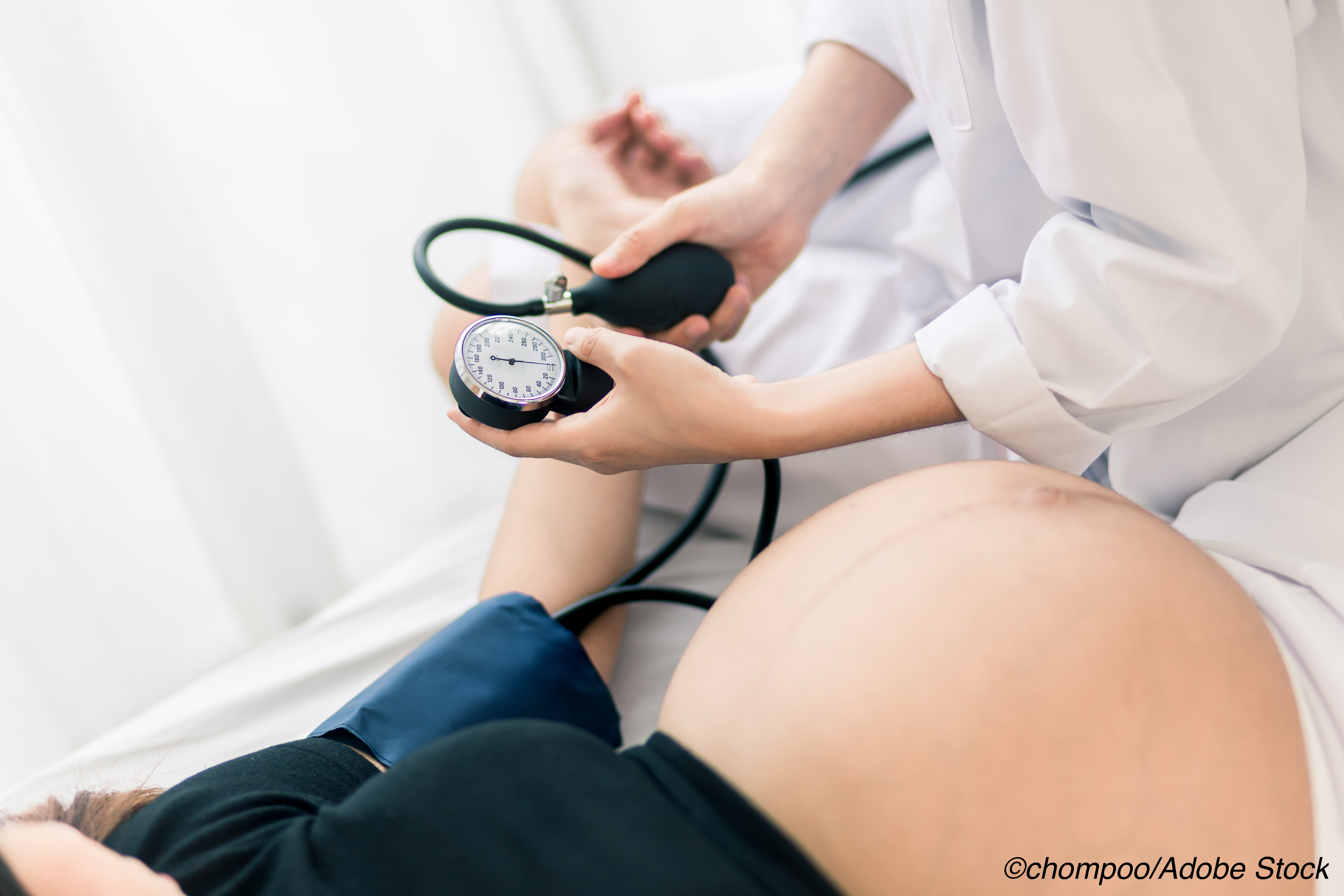 The prevalence of eclampsia in the U.S. varied widely by state, with less pronounced state-level differences observed for chronic hypertension and pregnancy-related hypertensive disorders in a cross-sectional study of more than 3.6 million women who gave birth in 2017.
The prevalence of eclampsia in the U.S. varied widely by state, with less pronounced state-level differences observed for chronic hypertension and pregnancy-related hypertensive disorders in a cross-sectional study of more than 3.6 million women who gave birth in 2017.
Delaware had the lowest prevalence of eclampsia, after adjusting for patient-level risk-factors (0.03%; 95% CI, 0.01%-0.09%), and Hawaii had the highest (2.8%, 95% CI, 1.88-2.82).
The median odds of developing eclampsia were estimated to be 2.4-fold higher for women delivering in a state with higher versus lower prevalence of the rare, but serious, pregnancy complication.
Researcher Alexander Butwick, MBBS, of Stanford University School of Medicine, Stanford, California, and colleagues, wrote that the reasons for the state-level variation are unclear.
A post hoc analysis of county-level prevalence for each hypertensive disorder showed no obvious geographic clusters.
“Given the substantial statewide variation in eclampsia prevalence and the association of eclampsia with maternal morbidity (e.g., disseminated intravascular coagulation, pulmonary edema, cardiac arrest and perinatal morbidity from placental abruption, prematurity and severe fetal growth restriction), studies are needed to explore reasons for this variation,” the researchers wrote in JAMA Network Open, published online Oct. 1.
They noted that in the U.S. as a whole, preeclampsia prevalence has been reported to be 3.0% to 3.4%, with a reported nationwide eclampsia prevalence of 0.08%.
But the extent of regional variation within the U.S. has not been previously reported.
“Identifying such variation has important implications for state and national health policy, national guidelines and etiologic research,” they wrote.
Using U.S. birth certificate data from 2017, the researchers conducted a cross-sectional study involving a population-based sample of 3,659,553 women delivering a live child during that year.
Multilevel logistic regression was used to assess state-specific prevalence of chronic hypertension, hypertensive disorders of pregnancy, and eclampsia.
In all, 185,932 women in the analysis (5.1%) were younger than 20 years of age, 727,573 women (19.9%) were 20-24 years old, 1,069,647 women (29.2%) were 25-29 years old, 1,037,307 women (28.3%) were 30-34 years old, 523,607 women were 35-39 years old, and 115,487 women (3.2%) were 40 years old or older.
Most women had Medicaid (42.8%) or private insurance (49.4%).
Among the main findings:
- Hawaii had the lowest adjusted prevalence of chronic hypertension (1.0%; 95% CI, 0.9%-1.2%), and the highest prevalence of eclampsia (2.8%; 95% CI, 2.2%-3.4%).
- Alaska had the highest adjusted prevalence of chronic hypertension (3.4%; 95% CI, 3.0%-3.9%).
- Massachusetts had the lowest adjusted prevalence of hypertensive disorders of pregnancy (4.3%; 95% CI, 4.1%-4.6%) and Louisiana had the highest (9.3%; 95% CI, 8.9%-9.8%).
- The degree of statewide variation was high for eclampsia (median odds ratio, 2.36; 95% CI, 1.88-2.82), indicating that the median odds of eclampsia were 2.4-fold higher if the same woman delivered in a U.S. state with a higher vs lower prevalence of eclampsia.
“Potential state or local measures that may explain this variation include differences in the screening and use of magnesium sulfate in women with impending eclampsia or severe preeclampsia, state-level economic factors, quality and access to adequate and equitable antenatal and intrapartum care, and distributions of physical or environmental etiologic factors,” Butwick and colleagues wrote.
They added that detailed analyses of pre-hospital and hospital-based care in the highest and lowest prevalence counties and states “would be an important first step in reducing regional differences in eclampsia.”
“Linkage of existing data sets, such as electronic health records and registries containing blood pressure data with other data on health and non-health exposures, may also inform how to improve hypertensive disease surveillance and treatment before and during pregnancy.”
In an accompanying editorial, epidemiologist Elena Kuklina, MD, PhD, of the CDC, wrote that monitoring the prevalence of eclampsia and the impact of current clinical strategies to manage hypertension during pregnancy is challenging in the United States “owing to gaps in data availability and standardization.”
“The study by Butwick et al. is a valuable contribution to the current literature on hypertension during pregnancy in the U.S. and variation by states,” Kuklina wrote. “This analysis is also a useful step in untangling complex issues of ascertainment and management of hypertension during pregnancy with an ultimate goal of decreasing adverse outcomes.”
-
The prevalence of eclampsia in the U.S. varies widely by state, with less pronounced state-level differences observed for chronic hypertension and pregnancy-related hypertensive disorders.
-
The median odds of developing eclampsia were found to be 2.4-fold higher for a women delivering in a state with higher versus lower prevalence of the life-threatening pregnancy complication.
Salynn Boyles, Contributing Writer, BreakingMED™
Funding for this study was provided by Stanford University School of Medicine and the CDC, the NIH and the Bill and Melinda Gates Foundation.
Researcher Maurice Druzin reported being cochair of the California Maternal Quality Care Collaborative preeclampsia taskforce. No other researchers reported disclosures.
Editorial writer Elena Kuklina reported no disclosures. She noted that here opinions were her own, and do not necessarily represent the official position of the CDC.
Cat ID: 191
Topic ID: 83,191,6,191,41,192,916,925

